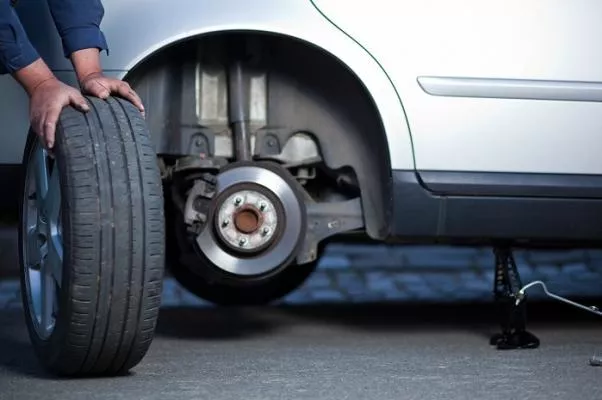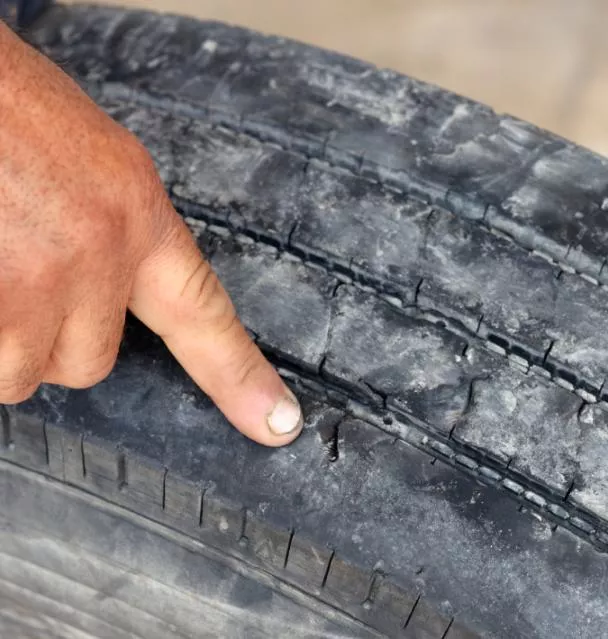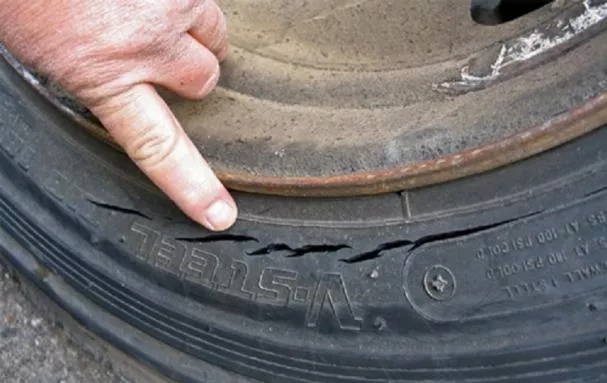In about 30,000 parts of an automobile, tires are one of the most important. Many people think that the tires will not wear out if they are unused and not have to endure friction and collision. But in fact, the groove and the tread of the tires still gradually deteriorate, even if you don’t drive.
How does the tire aging process take place?
All rubber tires degenerate over time, whether they are used or not. Automotive experts on car maintenance say that the average useful life of a tire in normal condition is no more than 10 years, because of the slow but certain tire aging process.
The main cause of tire aging is oxygen and water vapor in the air, which oxidize the rubber from the outside. When oxidized, the rubber becomes drier, making the tire harder thus easier to crack. If the driver doesn’t pay attention to small cracks in the tires, driving can be very dangerous due to a high chance of tire failure.

Automotive experts say that the average useful life of a tire in normal condition is no more than 10 years
Even if it is not used at all, an overaged and oxidized tire will develop tiny cracks due to the car’s weight that it carries and/or changes in outside temperatures and humidity. The air contained within the tire also exits over time, reducing tire pressure and causing flat tires.
>>> Are worn off tires more effective? Click to find out.
How to preserve and maintain the tires?
1. Choose the right tires
Each car has its own tire standards. Therefore, choosing the right tire is important not only to guarantee the performance and safety of your car but also to ensure the quality of the tires.
>>> Related post: How to prolong the lifespan of the tire?
2. Tread wear and tread depth
Over time, grooves and treads will wear out, so the road grip will be reduced and it will be harder and more dangerous either to break, accelerate or turn. So before the operation, the owner should check how worn off the tires are and replace when the tread depth is too shallow.
Tire Wear Patterns: Common Problems

Check how worn off the tires are and replace when the tread depth is too shallow
>>> Related: Driving with a bad tie rod: Symptoms, Effects, & Replacement costs
3. Switching tires
The tires wear out to different degrees from each other due to driving habits. Normally, the front tires wear faster than the rear tires because of greater friction. Switching tires (e.g from rear to front and/or from left to right) would help balancing the tire wear rates, thus extending the useful life of the tires.
4. Periodic tire check
According to car maintenance experts, car tires should be checked after every 50,000 km. In addition, the wheels should be weighted and the steering system be adjusted to ensure that the tires will not wear abnormally and unevenly.

Change tires when you see cracks
5. Change tires when cracks appear
Tire aging and oxidation is inevitable, so change the tires immediately if your old tires appear to have cracks.
>>> Click here to get more useful tips and advice for all car owners










